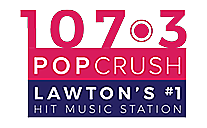
40 Years Ago: Emerson, Lake & Palmer Release ‘Brain Salad Surgery’
'Brain Salad Surgery' was Emerson, Lake & Palmer's last great album, a final moment of collaborative pomp before the group began to fragment into three separate entities.
Sure, it might seem a bit over the top. But that's the thing about ELP at their peak: There really was no top. Carl Palmer admitted as much in the liner notes included in the album's reissue. "We're not a straightforward rock band," he said. "We are a saber-rattling band!"
Even the recording of 'Brain Salad Surgery' reflects its time with a setting as flamboyant as the band's combination of rock and classical musics. ELP's previous album, 1972's 'Trilogy,' had been such a studio creation that the trio felt that it could never recreate the record in concert. That sparked the idea of a stripped-down approach for the follow-up; Emerson, Lake & Palmer wanted to move away from 24-track recording and toward something more straightforward.
Well, sort of ... ELP purchased an entire movie theater, ripped out all of its chairs and retrofitted it as a practice room. "I think 'Brain Salad Surgery' represented creating an album out of a collective inspiration," Greg Lake said in the reissue's liner notes. "That was the motivation behind buying this cinema to rehearse in -- to try and do something with more of a live, rather than preconceived, feel."
Once recording started, ELP could hardly keep from tinkering anyway. Best known for the futuristic, three-part and nearly 30-minute 'Karn Evil 9,' 'Brain Salad Surgery' is a technological wonder. It features the recording debut of a prototype Moog Apollo -- the first-ever polyphonic synthesizer -- on the opening 'Jerusalem,' and an early attempt at working with electronic drums on the muscular tweaking of the 20th century classical music piano concerto 'Toccata.'
Emerson, Lake & Palmer would eventually tour the album, hauling 36 tons of equipment with them, including what was referred to as the first discrete quadraphonic PA system -- not to mention a huge rig that levitated Keith Emerson's keyboard so that it could be spun, with him on it, a full 360 degrees.This is how a prog band got back to basics.
But it wouldn't last long. With punk and New Wave right around the corner, the trio's 1977 follow-up, 'Works,' was essentially three solo records featuring appearances by the other members of ELP. The end was already in sight.



